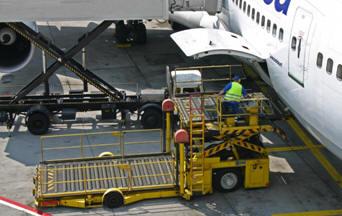|
|||||||||||
|
|
|
|||
|
By |
||||
 |
September 22, 2010
- The International Air Transport Association (IATA) revised its 2010
industry outlook and is now projecting a profit of $8.9 billion (up from
the $2.5 billion forecast in June). In its first look into 2011, the
Association estimates that profitability will drop to $5.3 billion. ?The industry recovery has been stronger and faster than anyone predicted. The $8.9 billion profit that we are projecting will start to recoup the nearly $50 billion lost over the previous decade. But a reality check is in order. There are lingering doubts about how long this cyclical upturn will last. Even if it is sustainable, the profit margins that we operate on are so razor thin that even increasing profits 3.5 times only generates a 1.6% margin. |
|||
|
|
||||
|
This is below the
2.5% margin of the previous cycle peak in 2007 and far below what it
would take just to cover our cost of capital,? said Giovanni Bisignani,
IATA?s Director General and CEO. The improved outlook for 2010 is being
driven by a combination of factors. On the revenue side increasing
demand and disciplined capacity management are leading to sharply
stronger yields pushing revenues higher. At the same time, costs remain
relatively stable.
Demand and
Capacity: Rapidly improving demand has pushed traffic 3-4% above the
pre-crisis levels of early 2008. Demand in 2010 is expected to grow by
11% (stronger than the previous forecast of 10.2%) while capacity will
only expand by 7.0% (up from the previous forecast of 5.4%).
Yield improvements
are the most important factor driving the improved outlook. On top of
last year?s capacity cuts, capacity expansion is lagging behind demand
improvements. The result is higher load factors and some pricing power
for airlines. More business travelers on premium seats are also boosting
average yields. Yields are now expected to grow by 7.3% for passenger
and 7.9% for cargo. This is sharply higher than the 4.5% previously
projected for both. Even with this improvement, yields are still 8%
below the pre-crisis levels of 2008. Revenues are expected to grow to $560 billion, $15 billion more than previously forecast. This is only slightly below the $564 billion in revenues achieved in 2008 when the previous economic cycle peaked and prior to the start of the financial crisis. |
||||
|
The revised
outlook maintains an average full-year crude oil price of $79/barrel.
However, excess refinery capacity is pushing the ?crack spread? slightly
lower than previously anticipated resulting in lower prices for jet
fuel. Even with stronger traffic the total fuel bill is now forecast to
be $137 billion, $3 billion lower than forecast in June. Fuel continues
to account for about 25% of industry costs.
Asia-Pacific:
Asia-Pacific carriers are expected to post a $5.2 billion profit. This
is better than the $3 billion recorded during the previous peak in 2007
and double the previously forecasted $2.2 billion. The strong
improvement is based on strong market growth and yield gains.
Renewed buoyancy in air freight markets has been particularly
important for airlines in this region, where it can represent up to 40%
of revenues. The 23.5% improvement in high volume intra-Asia premium
traffic, due to a surge in business travel, is another of the driving
factors.
Europe: Compared
to the June forecast, the prospects for
The industry
outlook grows weaker in 2011. The impact of the post-recession bounce
from re-stocked inventories will dissipate. Consumer spending is not
expected to pick-up the slack as joblessness remains high and consumer
confidence falls in Europe and
Industry growth is
expected to fall back to 5%, in line with the historical trend. But a
surge of aircraft deliveries (1400) will fuel capacity expansion of
6%?in excess of expected demand improvements. Falling load factors will
remove the possibility for further yield improvement leading to a more
challenging revenue environment. |
|
|
| Other News Stories |
| ?AvStop
Online Magazine
Contact
Us
Return To News
|
|


